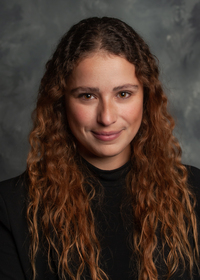Information Possibly Outdated
The information presented on this page was originally released on July 17, 2000. It may not be outdated, but please search our site for more current information. If you plan to quote or reference this information in a publication, please check with the Extension specialist or author before proceeding.
Research Tries To Cool Dairy Cows
MISSISSIPPI STATE -- Heat is an enemy of dairy milk production, and Mississippi's heat and humidity combine to significantly cut production during the summer.
When outside temperatures reach 75 to 80 degrees, dairy cattle experience mild heat stress. At 90 degrees and higher, they experience severe heat stress. During heat stress, a cow's normal body temperature of 101.5 degrees can reach 105 to 106 degrees.
Scott Willard, animal and dairy science researcher at Mississippi State University, said managing heat stress is important because of the hot and humid conditions that persist in Mississippi which can stress cows from mid-May to mid-September.
Dairy cows show heat stress by increased respiration rates, higher internal body temperatures and reduced milk production. Willard said daily milk production in dairy cattle can drop 20 percent or more when temperatures soar during the summer months.
"Such a drop in milk production directly affects the producer economically. This is on top of other impacts of heat stress on dairy cattle which can include reduced milk quality and the added expenses of trying to cool cows," Willard said.
Willard recently joined forces with visiting scientist Peter Hillman, environmental physiologist at Cornell University, to study heat stress in dairy cows.
"Ways to cool the animal are important for economic reasons and for the cow's well-being," Hillman said. "A comfortable cow is an economical cow."
In his tests, Hillman cooled the cows with fans and water spray. Using three Holsteins, he tested various combinations of wind speed and how often the cow was wetted. Results were compared to one cow which was not cooled. He measured the cows' internal temperature, respiration rate, evaporation rate from the skin and the relative humidity of the air.
Hillman said cows are not designed to cool themselves efficiently. The two ways to cool cattle are to spray them with water and blow air over them. The water-and-fans method increases the rate of evaporation and is the most economically feasible method to cool cows.
"Cows are lousy at panting and have only about 25 percent heat loss through panting," Hillman said. "The rest of the heat loss is through the skin. Cows sweat, but they don't do this efficiently, either."
Sweating cools the animal by drawing heat off the surface as water evaporates from the skin. High humidity and no air movement slow the evaporation process. Hillman's test system got the cows' hides wet, then blew them dry with a fan. This was repeated several times, drawing down the cows' internal temperature 1 to 1.5 degrees in an hour.
"A wet cow holds a lot of water on its hide and takes about 20 minutes to dry off in Mississippi's humidity," Hillman said. "During that time, they're cooling off faster than they would without the extra water."
Hillman and Willard's findings will be combined with data collected from similar experiments on dairy cows in Arizona. While Arizona is hotter than Mississippi, it has much less humidity. Data from these two states can be combined to determine ideal cooling methods for cows in other areas.
"It is important to try to find the most efficient way to cool the animals," Hillman said.
This research is part of a U.S. Department of Agriculture regional project which is concerned with the effects of stress on livestock production. Locally, the research is being conducted by the Mississippi Agricultural and Forestry Experiment Station through MSU's Animal and Dairy Science Department.
Willard said goals of the research include finding the most efficient way to cool animals using water and fans, and so help dairy farmers find better ways to cool their cows. The research also provided an opportunity to share expertise between the institutions.
Contact: Dr. Scott Willard, (662) 325-0040


